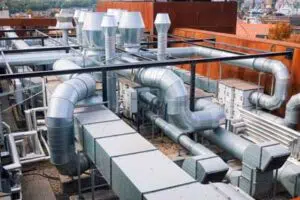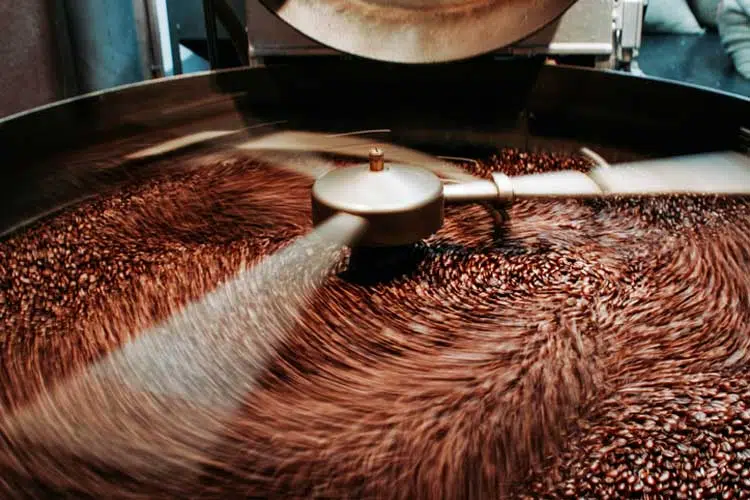The aroma of coffee emanating from your local coffee shop entices you in the morning. But what if the aroma wasn’t from the Starbucks down the street, but from a roasting factory in your city? Along with that enticing aroma, the coffee roasting process, like any other industrial process, results in by-products that you don’t want to escape into the air.
Chaff is the papery-thin skin of the coffee bean which falls off the bean when it’s roasted. In an industrial roasting plant, the chaff is collected in baghouse filters on the roof of the factory. These large filters are highly effective in keeping the chaff – and other pollutants – out of the surrounding air. However, they need to be cleaned periodically to run at their peak efficiency. And what if there was an undetected hole or tear in the filter so that the chaff and other pollutants escaped?
Differential pressure gauges can be used in these applications, but traditional gauges still need a person to take readings and record them manually, which is not so convenient with a rooftop baghouse. Newer, digital pressure transmitters have been around for about 20 years, but installation can be expensive and inconvenient, requiring electrical wiring – again, not ideal for baghouse filter monitoring. This is where Phase IV’s wireless differential air pressure sensor is an ideal solution.
What is Differential Air Pressure?
Consider how you monitor the air pressure of your car’s tires; your tire gauge will tell you it’s around 32 psi (pounds per square inch). What this is really measuring is the difference between the atmospheric pressure outside the tire and the air pressure inside the tire, but this is a basic air pressure measurement.
Differential pressure monitors measure the difference between two different areas, for example the outside and the inside of the previously mentioned baghouse filter, or an HVAC filter, or a cleanroom entrance. Instead of psi, differential pressure is measured in inches of water (shortened to inH20). This is a very precise measurement — 1 inH20 equals .036 psi — because the difference in air pressure can be subtle, yet significant.
Wireless Differential Air Pressure Sensors – Applications
Differential pressure sensors are invaluable in situations where it’s critical to know about slight change in pressure comparisons. Along with continuous, automatically recorded monitoring, the systems will send alerts via phone, text, or email so that maintenance staff can check on any issues and plan for any needed repairs at a convenient time.
Some of the best use examples include:

Cleanrooms
Differential pressure sensors continuously compare the pressure inside and out of the cleanroom to make sure contaminants are kept out, or harmful compounds are kept in. In addition, differential air pressure sensors can monitor exhaust vent air filters. This monitoring is especially important in industries such as pharmaceuticals, biotech, wafer fabrication, and others where a faulty clean room can cause expensive product loss.

Industrial HVAC Systems
An industrial HVAC filter may cost $1,000, and there may be a dozen or more in a factory. Changing one too soon, based on scheduled maintenance, isn’t economical. If it goes too long, inefficient operation costs energy, money and possibly result in dangerous emissions. By monitoring the difference in pressure on the two sides of an HVAC filter, a differential air pressure sensor can help detect two different issues. First, if there is too much difference in air pressure, this can mean the filter is clogged and needs to be changed. Second, if there isn’t enough difference between the two measurements, this could indicate a possible tear or hole in the filter.

Data Centers
Efficient, accurate monitoring of HVAC systems is especially critical in data centers. Not only do the servers generate a lot of heat, but overheating can lead to unplanned downtime and possible data loss. With continuous wireless monitoring, maintenance operations managers can schedule filter replacement at the optimal time.
The Leap Sensors Advantage
The advanced, modular design of Phase IV’s differential pressure sensor system is its ease of installation & use. A system can be installed, powered up, and connected to software in less than 10 minutes, including easy integration with BACnet systems (no cloud-based software required). In addition, it is the only wireless differential pressure transmitter that is part of a complete system, Leap Sensors, that is easy to expand to add almost any other industrial sensors you might need. To go back to the coffee roasting example, you could monitor:
- the baghouse filters.
- the temperature at which the coffee is being roasted.
- the motor on the mixing machines.
- the count of bags as they are readied for shipping.
From industrial coffee roasters to pharmaceutical cleanrooms, to the data centers that hold the world’s information, differential air pressure monitoring is a vital tool. Find out how we can configure a system to meet your exact needs – talk to one of our wireless sensor experts.
